The Implact Of Customer Relationship Marketing On Market Performance – A Study Among Iranian Telecommunication Service Providers
Bạn đang xem bản rút gọn của tài liệu. Xem và tải ngay bản đầy đủ của tài liệu tại đây (1.65 MB, 110 trang )
2008:085
MASTER'S THESIS
The Impact of Customer Relationship
Marketing on Market Performance
- a study among Iranian telecommunication service providers
Pantea Pezeshkan Jalili
Luleå University of Technology
Master Thesis, Continuation Courses
Marketing and e-commerce
Department of Business Administration and Social Sciences
Division of Industrial marketing and e-commerce
2008:085 - ISSN: 1653-0187 - ISRN: LTU-PB-EX--08/085--SE
The Impact of Customer Relationship Marketing on
Market Performance: a study among Iranian
telecommunication service providers
Supervisors:
Proff. Albert Caruana
Dr. S. Kamal Chaharsooghi
Prepared By:
Pantea Pezeshkan Jalili
Tarbiat Modares University Faculty of Engineering
Department of Industrial Engineering
Lulea University of Technology
Division of Industrial Marketing and E-Commerce
Joint MSc PROGRAM IN MARKETING AND ELECTRONIC COMMERCE
2008
I dedicate this thesis to my dear mother and father
2
Abstract
While a vast number of studies have pointed out the keys of relationship
marketing practices in consumer markets, little attention has been paid to the value the
organization can get from such strategies in the B2B market. The literature provides
relatively little support for the effectiveness of relationship marketing programs. The
purpose of this research is to produce some evidence of the association between
customer relationship marketing strategies which are attraction activities and Loyalty
programs (Bonus, Contact, Customer satisfaction, Contact) and the market
performance. The proposed hypotheses are tested in the case of telecommunication
service firms, where long-term relationship is needed.
This research involved
collecting data from Iranian Telecommunication managers of 105 telecommunication
companies to understand the
relationship exists between attraction and loyalty
programs (Bonus-Contact-Satisfaction and complaint) with market performance of the
companies and the market performance is measured by market position, customer
perception about the firm and customer’s loyalty. The hypotheses were evaluated
using a SEM analysis, which associates relationship between attraction activities and
Loyalty and interaction programs with market performance (customers’ perceptions,
market position and loyalty) by using Partial Least Square (PLS) Techniques. The
findings suggest that the effect of attraction and loyalty programs are greater than
service quality on market performance, Furthermore, This means that, loyalty and
interaction programs are more influential on companies’ awareness and penetration in
the market (market position). Attraction activities (service quality) has greater impact
on customer’s perception, however bonus and customer satisfaction are more
associated with customers’ loyalty also customer satisfaction has grater impact on
customers’ loyalty than service quality.
Keywords: Relationship Marketing, Service Marketing, Market Performance,
B2B, Telecommunication, Iran
3
Acknowledgements
I have learned a lot and really enjoyed while working on this thesis .I would
like to sincerely thank all those who helped me with their valuable support during the
entire process of this thesis.
I would like to thank my supervisor, Professor Albert Caruana for his helpful
guidance, support and contribution. I would also like to express my gratitude to my
supervisor, Dr. Kamal Chaharsooghi, who guided and helped me all along the way.
I also thank the faculty members of Luleå University of Technology and
Tarbiat Modares University they all gave me the honor of attaining the Master degree.
And also I should thank Ali Azari for his helpful ideas and encouragement
during all phases of this thesis and Payam Oskouie who helped me in editing and
finalizing the thesis formatting.
4
Table of Contents
Table of Contents ………………………………………………………………..….
List of Tables …………………………………………………………………..……
List of Figures …………………………………………………………………..…..
Abbreviations …………………………………………………………………..…...
Chapter I
1. Introduction ………………………………………………………………..……
1.1. Background ………………………………………………………………..…...
1.1.1. Telecommunications ………………………………………………..……
1.1.2. Why Relationship Marketing ………………………………………..…...
1.2. Problem Discussion ………………………………………………………..…...
1.3. Purpose and Research Questions …………………………………………..…...
1.4. Disposition of Thesis ………………………………………………………..….
Chapter II
2. Literature Review …………………………………………………………..…...
2.1. Relationship Marketing Theory …………………………………………..……
2.1.1. Relationship Marketing Formation ………………………………..……
2.1.2. Relationship Marketing Definition ……………………………….…….
2.1.2.1. Business Marketing Relationship ……………………………..
2.1.2.2. Value Creation in Service ……………………………………..
2.2. Attraction, Loyalty Programs and Interaction ……………………………..…...
2.2.1. Customer Attraction ………………………………………………..…...
2.2.1.1. Service Quality ………………………………………………..
2.2.1.2. Service Quality in B2B Setting …………………………….….
2.2.1.3. A new model for measuring quality in B2B setting …………..
2.2.1.4. Relationship Value ………………………………………….…
2.2.2. Customer Loyalty Programs …………………………………………....
2.2.2.1. Bonus ………………………………………………………….
2.2.2.2. Personal Contact ………………………………………………
2.2.2.3. Satisfaction ……………………………………………………
2.2.3. Interaction ………………………………………………………….…...
2.3. Relationship Marketing Outcomes ………………………………………..……
5
8
9
10
11
11
12
12
13
13
16
17
17
17
20
20
23
24
25
25
28
29
30
31
34
34
35
38
40
5
2.4. Performance ………………………………………………………………..…...
2.4.1. Performance Measurements ………………………………………..…...
2.4.2. Market Performance …………………………………………………....
2.4.2.1. Market Position ………………………………………….…….
2.4.2.2. Customer’s Perception …………………………………….…..
2.4.2.2.1. Image ……………………………………………...
2.4.2.2.2. Personalized Relationship ………………………...
2.4.2.3. Customer’s Loyalty …………………………………………...
2.4.2.3.1. Dimensions of Customer Loyalty ………….…..….
2.5. World’s Telecommunication Growth ……………………………………..……
2.5.1. Iran Telecommunication Market ………………………………….……
2.6. Conclusion ……………………………………………………………….….….
2.7. Frame of References …………………………………………………….….…..
Chapter III
3. Research Methodologies ……………………………………………….….……
3.1. Research Philosophy: Positivism / Phenomenology ……………………..…….
3.2. Research Purpose: Exploratory / Descriptive / Explanatory …………….….….
3.2.1. Exploratory Research …………………………………………….….….
3.2.2. Descriptive Research …………………………………………….……..
3.2.3. Explanatory Research …………………………………………….…….
3.3. Research Approach ……………………………………………………….….…
3.4. Research Strategy …………………………………………………………..…..
3.4.1. Experiment / Survey / Case Study / Grounded Theory ………….……..
3.4.2. Cross-Sectional / Longitudinal …………………………………….…...
3.5. Selection of Sample …………………………………………………….….…...
3.6. Some Approaches to Gain Access ……………………………………….….….
3.7. Measurement of The Constructs And Pilot Test …………………………..…...
3.8. Data Collection ……………………………………………………………..…..
3.9. Reliability and Validity ……………………………………………………..….
3.10. Statistical Analysis ………………………………………………………..…..
3.11. Chapter Summary …………………………………………………………..…
Chapter IV
4. Data Analysis ………………………………………………………………..…..
4.1. Survey Response ……………………………………………………..………...
4.2. Measurement (outer) Model ………………………………………………..…..
4.3. Structure (inner) Model ………………………………………………..…..
4.3.1. R-Square …………………………………………………………….….
4.3.2. Structural Path ………………………………………………….………
4.3.3. Market Position …………………………………………………..……..
4.3.4. Customer’s Perception ……………………………………………..…...
41
42
45
46
46
46
48
48
49
50
52
55
57
61
61
62
63
63
64
64
66
66
68
68
70
71
74
74
75
76
77
77
79
82
83
84
85
87
6
4.3.5. Customer’s Loyalty ……………………………………………….……
4.4. Chapter Summary …………………………………………………………..…..
Chapter V
5. Discussion and Conclusion …………………………………………..…………
5.1. Theoretical Implications ………………………………………………..………
5.2. Practical Implications …………………………………………………..………
5.3. Contributions ……………………………………………………………..…….
5.4. Limitations ………………………………………………………………..…….
5.5. Future Research …………………………………………………………..…….
References ……………………………………………………………………..…...
Appendix A: Questionnaire …………………………………………………..…...
Appendix B: Comparative Analysis Between Technique ………………..……...
Appendix C: Compatibility By Research Approach ……………………..……...
88
88
89
90
92
93
94
95
96
105
108
109
7
List of Tables
Table 2.1: Contacting Customers at the right Frequency…………………………..
35
Table 2.2.: Major Constructs of Relationship Quality………………………………
38
Table 2.3: Long Term relational out comes…………………………………………
41
Table 2.4: International contextual factors impacting performance measurement
effectiveness ……………………………………………………………………….
43
Table 2.5: Mobile Basic Statistics……………………………………………………
53
Table 2.6: Iranian Mobile Providers Competition……………………………………
54
Table 2.7: Mobile Market Liberalization……………………………………………
54
Table 2.8: Iran latest telecommunication statistics…………………………………
55
Table 2.9:
Frame of Reference of Articles About Impact of CRM on Market
Performance …………………………………………………………………………..
57
Table 2.10: Frame of Reference of Books About Impact of CRM on Market
Performance …………………………………………………………………………..
60
Table 3.1: Relevant Situations for Different Research Strategy ……………………..
67
Table 3.2: Constructs and measure …………………………………………………...
73
Table 4.1 Sample demographic ………………………………………………………
78
Table 4.2: constructs reliability………………………………………………………
80
Table 4.3: Constructs weights ………………………………………………………
82
Table 4.4: (R²) for each endogenous construct ……………………………………….
84
Table 4.5: Structural model results …………………………………………………...
85
8
List of Figures
Figure 2.1: Complex Network reality of marketing ………………………….……... 19
Figure 2.2: Complete marketing equilibrium of a network of relations, both inside a
firm and in the market………………………………………..…………………….
Figure 2.3: A Portfolio of Customers…………………………………………….….
20
21
Figure 2.4: The proposed analytical framework for managing customer
relationships effectively……………………………………………………………... 23
Figure 2.5: The Effect of Value-Adding Strategies in a Long Term
Relationship………………………………………………………………………….. 30
Figure 2.6: Expanding the dimensions Of Relationship Value………………….…... 31
Figure 2.7: A Service Satisfaction Framework……………………………….……… 36
Figure 2.8: Illustration of Interaction Model ……………………………………….. 39
Figure 2.9: Schematic Overview of key constructs relevant to the practice of BuyerSupplier Relationships………………………………………………………….……. 40
Figure 2.10: The dimensions of customer loyalty…………………………….….….. 49
Figure 2.11: Growth of Mobile Phone Subscribers……………………………….…. 50
Figure 2.12: Mobile Telephone Subscribers per 100 inhabitants………………..…... 51
Figure 2.13: Global Telecommunications Revenue 2004……………………...……. 51
Figure 2.14: Global Telecommunications Revenue 2009………………………...…. 52
Figure 2.15: proposed model……………………………………………………...…. 56
Figure 4.1: Estimated results for proposed model ………………………………….. 83
9
Abbreviations
CRM
Customer Relationship Marketing
CS
Customer Satisfaction
LO
Loyalty
CO
Contact
COM Complaint
B
Bonus
SEM Structural Equation Modeling
PLS
Partial Least Square
GSM Global System for Mobile
CP
Customers’ Perception
ATT
Attraction activities
MCCI Mobile Communication Company of Iran
10
Chapter I
Introduction
1. Introduction
In this chapter an introduction of thesis is provided. The chapter begins with a
background concerning the research area which also shows the study’s importance,
followed by problem discussion, which guides the reader to the research purpose and
the research questions. Finally the structure of the thesis is presented.
1.1. Background
World Telecommunication and Iran Telecommunication market also industry
and relationship marketing will be discussed.
11
1.1.1. Telecommunications
Telecommunication is an important economic sector in world economy. It also
has a growing impact on our lives as individuals, on businesses in terms of efficiency
and customer service and on every country's competitiveness as a profitable economy.
In this highly competitive market, telecom service companies are certainly and
seriously forced to deliver new services to their customers, Due to the Paradigm Shift
from 4Ps Marketing Mix toward Relationship Marketing, industrial marketing,
services marketing and customer relationship economics demand a move toward
relationship-oriented strategy in marketing.(grönroos,1994)
Telecommunication industry is experiencing a radical change, generating new
opportunities and challenges for infrastructure and service providers. With the
increase in production of mobile devices and services as international market in recent
years, according to the triple play of telecom, entertainment and IT convergence the
global telecommunication market is growing and changing. (ITU publications, 2002)
In the 2010 the number of mobile phone subscriber’s world wide will rise to 4
billion. Telecom Industry body, the GSM Association, have announced that by 2010
mobile networks will cover 90% of the world’s population. Governments have earned
over 6 billion dollars from the telecoms industry (ITU Publications, 2002)
The total number of mobile connections is now equivalent to almost a third of
the estimate world population of 6.5 billion. (ITU Publications, 2002)
1.1.2. Why Relationship Marketing
Building relationships with customers and suppliers was necessary for a
company during the past few years, concentrating their marketing with focusing on
their important customers and suppliers, whom they must develop in order to build
long-lasting relations. This is the only way that a company can obtain a permanent
competitive advantage and as a result ensure its own survival and growth. It implies
that relationship building is considered to be a key factor to success (Jørgensen,
2001).
12
Relationship marketing would lead to greater marketing productivity by
making it more effective and efficient.
Building and maintaining relationships have considerable long term
implication and have impact on strategic and long-range firms’ planning marketing.
(Sheth and Parvatiyar, 1995; cited by Gummenson, 1987)
In order to create relationship with both individual customers and business
customers we should attract them, to develop this relationship we should make them
satisfied and to maintain this relationship we should retain them and at last we will
make more profit from them, so Building, Developing and Maintaining relationship
with their customers, both individual customers or businesses, should be their main
Goals. (Izquierdo et al., 2005)
There are numerous studies that focus mainly on the performance implementation
problems (Meekings, 1995; Bierbusse and Siesfeld, 1997; Lewy and Du Mee, 1998;
Schneiderman, 1999; Bourne et al., 1999, 2000, 2002, 2003; cited by Bourne, 2005),
But the whole area of how performance measures are used has attracted less attention
until recently. (Bourne, 2005)
1.2. Problem Discussion
Despite different types of Relationship Marketing and business Relationships,
I want to distinguish if there is a significant relationship between relationship
marketing
programs
and
Iranian
Telecommunication
organizations’
market
performance. Within the rapidly expanding literature of relationship marketing,
business-to business marketing and customer relationship management there is
relatively little attention paid to the value the organization can get from such strategies
such as supplier’s performance.
1.3. Purpose and Research Questions
Among the vast studies has been done in the field of relationship marketing,
although they have focused on different aspects of the relationship marketing, less
13
researches are found on the effectiveness of relationship marketing, also little
empirical research has been conducted on the values of relationship marketing
programs and their effect on supplier’s side. The goal of this research is to prove the
association which exists between relationship marketing strategies and firms’ market
performance. The findings of this research will help firms understand the
effectiveness of relational exchange from the firm’s perspective, and develop
appropriate relationship marketing Strategies in the B2B context.
In this context I want to understand which of these relational activities has
significant relationship with market performance.
Following these arguments, we can propose that the value created by
relationship marketing with customers will be reflected in market performance.
Market performance is the improvement of the market position in a company
which is, building product awareness and penetration in the market like image,
forming customers’ perceptions of the organization and their products (Srivastava et
al., 1999; cited by Izquierdo, 2005) and increasing of customer loyalty and retention
(Evans and Laskin, 1994; cited by Izquierdo et al., 2004).
In this context I want to understand which relational activities such as
attraction programs, loyalty and interaction programs has significant effect on market
performance of a company.
To fulfill this purpose the following research questions shall be addressed,
1- Is there a significant relationship between Attraction activities and market
position?
2-Is there a significant relationship between Attraction activities and customers’
perceptions about the firm?
3-Is there a significant relationship between Bonus and customers’ perceptions about
the firm?
4-Is there a significant relationship between Contact and customers’ perceptions
about the firm?
5-Is there a significant relationship between Customer Satisfaction and customers’
perception about the firm?
6-Is there a significant relationship between Complaint and customers’ perceptions
about the firm?
14
7-Is there a significant relationship between Bonus and customers’ loyalty about the
firm?
8-Is there a significant relationship between Contact and customers’ perceptions
about the firm?
9-Is there a significant relationship between Customer satisfaction and customers’
perceptions about the firm?
10-Is there a significant relationship between Complaint and customers’ perceptions
about the firm?
11-Is there a significant relationship between Bonus and market position?
12-Is there a significant relationship between Contact and market position?
13-Is there a significant relationship between Customer satisfaction and market
position?
14-Is there a significant relationship between complaint and market position?
15-Is there a significant relationship between Customers’ perception about the firm
and Loyalty?
1.4 Disposition of the Thesis
This thesis is composed of five chapters.
Chapter
One:
This
chapter
presents
a
brief
background
in
telecommunication and relationship marketing, in the first chapter a broader problem
has been narrowed down to a research problem and research questions.
Chapter Two: Chapter two contains of literature review and frame of
references. This chapter reviews selective literature on relationship marketing,
Industrial and business marketing, Value creation in service, Attraction programs
,Service Quality, Industrial service quality , Loyalty and Interaction programs
,Customer’s perception about the firm and Market performance will be presented. The
second part of chapter two is research frame work. Finally, Hypotheses within the
research framework are explicated.
15
Chapter Three: Chapter three determines the type of research. Then it
explains the constructs’ measurement, pilot test, sampling, data collection method and
at last refinement and validation of the scale items.
Chapter four: Demographics and descriptive statistics, assessment of
constructs reliability and validity and results of hypotheses tests are presented in this
chapter.
Chapter five: Chapter five, the final chapter, presents a discussion of
theoretical and practical implication of results. A summary of the contribution of this
study, its limitations, suggestions and future research are presented.
16
Chapter II
Literature Review
2. Literature Review
“The further backward you can look the farther forward you are likely to see”
Winston Churchill
This chapter is based on the introduction given lately and the research
problem presented in chapter one also the previous studies that have been done within
these constructs. It will provide the reader with a literature review concerning the
research area.
17
There are large numbers of studies have been conducted in the field of
relationship between suppliers and customers. There have been useful contributions
expressed by so many authors about Relationship Marketing theory, Attraction and
Loyalty programs as important factors of Relationship Marketing. At the end market
performance literature will be discussed as the Relationship marketing strategies’
outcome. In this study this contribution will be reviewed to show relationships
between these variables and emphasizes on the Impact of Relationship Marketing on
Market performance of the Iranian telecommunication companies. At the end of this
chapter the frame of references will be presented.
2.1. Relationship Marketing Theory
According to the literature, there are numbers of conceptual studies have been
done on Relationship Marketing theory and strategy.
2.1.1. Relationship Marketing Formation
“Berry was the first one who used the term relationship marketing in 1983; it
will be indicated that early attempts to formulate a general theory of marketing
already included a relationship perspective. However, this perspective did not have
the importance it has gained today, because the environmental factors were not as
strong as today. Thus there have been in fact two ways to the present-day relationship
marketing. The first was realizing the importance of relationships gradually, initially
in service marketing and partly in industrial marketing. The second way was through
a transformation of business in general, due to rapid and radical changes in the
environment. These changes resulted in an emphasis on service, close contact with
customers, and a holistic view of the parties and also processes involved in marketing
and business.”(Toivo, 1996)
18
According to Gronroos (1993) and Liljander and Strandvik (1995), there was a
paradigm shift in services marketing. The shift was from a transaction-oriented
“marketing mix” view of exchanges to a relationship marketing view.
Relationship marketing has emerged in response to the Environment’s new
claims which aim was blurring boundaries between markets or industries, an
increasing fragmentation of markets (Shani and Chalasani, 1992), this is the one of the
best ways that a company can get a permanent competitive advantage and ensure its
own survival and growth. It seems that relationship building is considered to be a key
factor to success.
In traditional marketing and economics, the market is only outside the
company but now there are also markets inside the company so marketing activities
can take place between internal customers. It has also shown that internal and external
customers interact in networks of relationships (Gummesson, 1996). See Figure 2.1
and also 2.2.
Figure 2.1: Complex Network Reality of Marketing
Sources: Gummenson(1995)
19
Figure 2.2: Complete marketing equilibrium of a network of relations, both inside a firm and in the market
Sources: Gummenson (1995)
2.1.2. Relationship marketing definition
“Relationship marketing is an important strategy and is one of the important
aspects of marketing in these two decades. The first researchers who defined
relationship marketing as “all marketing activities directed toward establishing,
developing, and maintaining successful relationships” were Morgan and Hunt (1994).
These Relationships can exist between the organization and its customers, and also
between the organization and other organizations and stakeholders. Relationships
between customers and business firms have been consistently encouraged as
successful business practices worldwide. The connection with marketing has seldom
been established formally in the development of marketing theory” (Yau, 2000).
2.1.2.1. Business marketing relationships
Relationship marketing (RM) was known as an strategic approach to industrial
and service markets, and was considered to be unsuitable in other marketing
contexts.(O’Malley and Tynan, 2000)
Business-to-business marketing has been changed during the past thirty years
both in the phenomenon studied and also in its conceptual process. many such as
International Marketing and Purchasing (IMP) Group has been active In B2B
20
mark
keting researrch believe that
t
if B2B marketing research staarts with relaationships
betweeen organizaations and neetworks it is a strong possibility thatt a new set of
o findings
emerg
ge, differentt set of assumption be shaped and different
d
proocesses be foound(Leek
et al.22003)
n exact defiinition of rellationship marketing,
m
wee can stronglly say that
There is no
it hass flexible booundaries buut many pracctitioners andd academic people
p
are continuing
c
lecturring about thhe Relationsh
hip marketinng.
The coree of relation
nship markeeting is relaations, mainntenance off relations
betweeen the com
mpany and the
t actors iin its micro-environmennt, such as suppliers,
mark
ket intermediiaries, the pu
ublic and speecially custoomers as the most importtant actor.
The idea
i
is first and foremoost to createe customer loyalty
l
so thhat a stable, mutually
profittable and lonng-term relattionship is enhanced (Raavald&Gronnroos, 1996)..
Academiccs in the fiellds of servicces marketin
ng (Berry, 1983; Grönrooos, 1990;
cietedd by Szmigiin and Bourrne, 1998), bbusiness-to business
b
maarketing (Bon
noma and
Johnsson, 1978; Dwyer
D
et al., 1987; Fordd, 1981; citeed by Szmiggin and Bou
urne, 1998
and high-tech
h
maarketing (MccKenna, 19991; cited by Szmigin andd Bourne, 1998) have
all co
oncluded thhat long-term
m relationshhips can bee beneficial for both buyer
b
and
suppllier.
Figure 2.3: A Portfolio of
o Customers
Source:: Naude(2004)
21
The need for relationship will increase when the number of customers in an
organization is getting low, there is commitment and trust from both partners and also
real opportunity for Win-Win situations, switching costs lost for good if relationship
fails, we would have loyalist trading. Otherwise when the company as the number of
customers increases according to the Naudi’s portfolio depicted in figure 2.3 ,there is
no opportunity or no desire for continuing relationship also little scope for mutual
Added Value, low switching costs and there is always-a-share if offer is good enough
and also there will be a mercenary trading.(Naudi,2004)
The idea of relationship and also relationship building being extended to other
areas such as distribution, service and consumers these are as the result of strong
interest in relations between industrial companies. So we must also build relations to
middlemen, service suppliers and end consumers. (Jørgensen, 2001)
Relationships in the industrial marketing literature have been described as the
exchange between all mutually committed parties. In the service marketing the subject
has not been clearly debated. The simplest form of a relationship is when the customer
has purchased from the same service provider at least twice. In its simplest form,
however, a relationship is characterized by positive commitment by both the service
provider and the customer. Liljander and Strandvik(1995) proposed that a relationship
term should be defined from the customer’s point of view as this corresponds to a
market oriented perspective. The customer can be committed both negatively and
positively toward the service provider, or s/he can be indifferent. A negatively
committed customer will try to end up the relationship as soon as possible, but is
usually unable to do so in the short period of time because of different bonds which
serve as exit barriers (Liljander and Strandvik, 1995).
According to this marketing fact that customer retention is five times more
important than attracting new customer , companies are adopting relationship
marketing principles and designing strategies to develop close and long-lasting
relationships with the most profitable customers. The long term-orientation which
emphasizes commitment to customers is extremely important. (sheth and parvatiyar,
1995).
22
2.1.2.2 Value Creation in service
Customer relationship marketing goal is to provide increased value to the
customer and results in a lifetime value for the service provider. The reason is due the
fact that, higher customers value will raise customer satisfaction; thereby customer
loyalty will be instilling; which, in turn, creates higher profit due to increased volume
resulting from positive word-of-mouth and repeat purchases (Liu et al.,
2000).”Customer value creation is at the heart of relationships between services
recipients and service providers”. (Batiz-Lazo, 2001)
In order to build up a lasting and successful customer relationship the provider
needs to have a deep understanding of the customer's business activities in which the
customer creates value for himself. (Helander and Hirvonen, 2001)
The basic idea in the value creation approach is that by knowing the
customer’s value creation process the provider can better identify the problems that
the customer has faced in his business activities. (Helander and Hirvonen, 2001)
Source: Helander and Hirvonen (2001)
Figure 2.4: The proposed analytical framework for managing customer relationships effectively
23
In fact, the provider can even notice above mentioned problems and concerns
that the customer himself can not see. (Storbacka, Blomqvist, Dahl and Haeger 1999;
cited by Helander and Hirvonen, 2001) by providing a solution to these problems the
provider can offer a more valuable relationship to the customer than other competitive
providers can. (Helander and Hirvonen, 2001)
In Figure 2.4 they introduced an analytical framework that is based on the
ideas of the value creation approach. According to this three-phase model, the
provider first needs to identify his customer's value creation process before he can aim
at supporting it. This supporting should be done in a profitable way so that both the
provider and the customer could benefit from that relationship. (Helander and
Hirvonen, 2001)
“Value creation and value sharing can be regarded as the reason for
collaborative relationships to live. The purpose of the interaction between suppliers
and customers is to create and to share value. Some authors suggest that value can
only be obtained if customers are willing to engage in long term relationships and
perceive them as valuable. Previous researchers studied relationships from the
customer’s point of view and analyze how relationship marketing helps to create
value to customers. The process of developing customer-firm relationships starts
when the firm invests in activities directed towards attracting customers and
positioning on the market. However, a greater effort is needed in order to make these
customers loyal. Attraction and loyalty programs are necessary in the process of
creating customers-firm relationships that are valuable both to customers and the firm
“(Izquierdo et al., 2005).
2.2. Attraction, loyalty and interaction programs
“Since relationship marketing includes all activities directed towards the
establishment, development and maintenance of exchange relationships (Morgan and
Hunt, 1994) the activities of a relational strategy should comprise the next objectives
(Izduierdo et al.,2005)”:
•
Attraction (creating relationships);
•
loyalty (developing relationships);
24
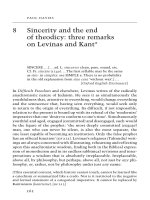


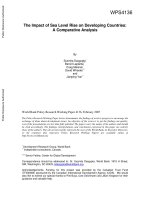
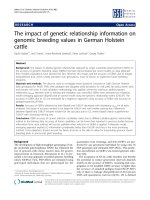

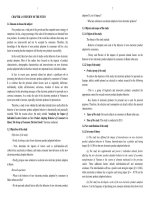
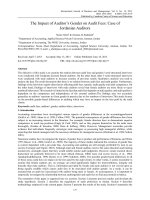
![daniels and booker - 2011 - the effects of audit firm rotation on perceived auditor independence and audit quality [mafr]](https://media.store123doc.com/images/document/2015_01/06/medium_sds1420548148.jpg)
![ionescu - 2014 - the effect of mandatory partner rotation on audit quality [mapr]](https://media.store123doc.com/images/document/2015_01/06/medium_fam1420548198.jpg)